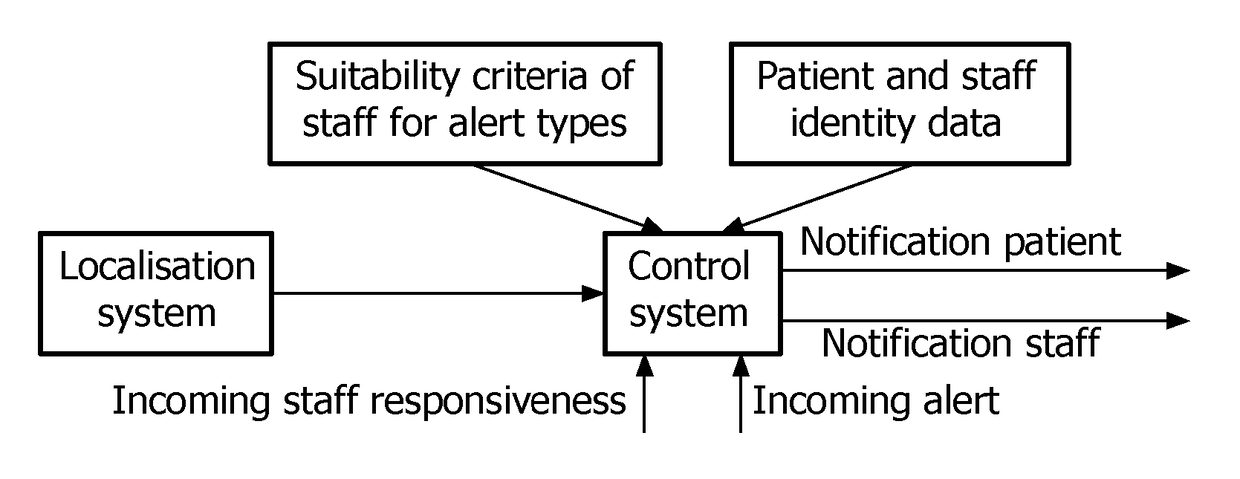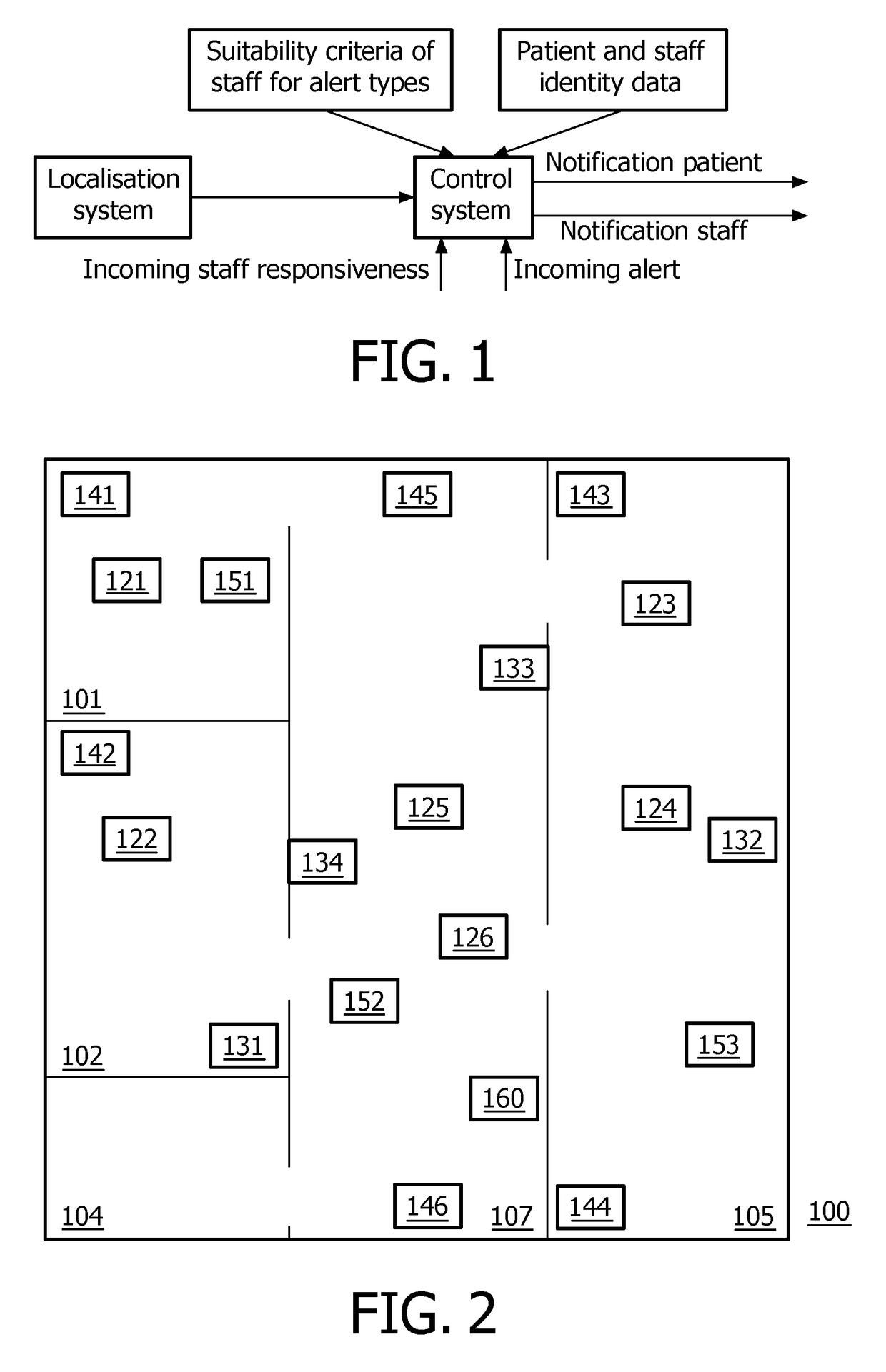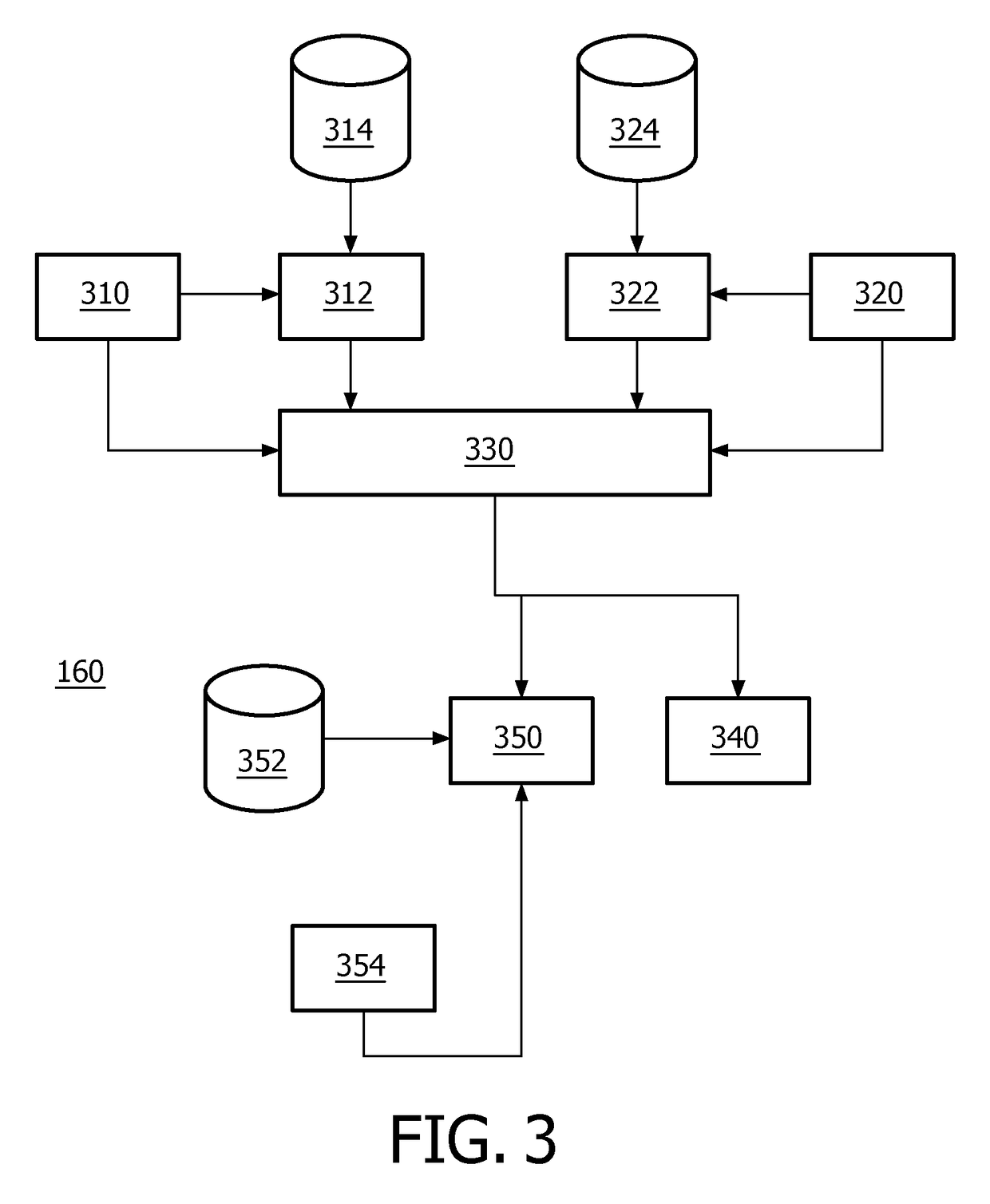Device and method for routing a medical alert to a selected staff member
a medical alert and device technology, applied in the direction of diagnostic recording/measuring, instruments, electric signalling details, etc., can solve the problems of not being able to meet the needs of patients, too many or too few paged individuals, and out of date assignment or availability dates, etc., to achieve the effect of improving the routing method
- Summary
- Abstract
- Description
- Claims
- Application Information
AI Technical Summary
Benefits of technology
Problems solved by technology
Method used
Image
Examples
Embodiment Construction
[0063]While this invention is susceptible of embodiment in many different forms, there is shown in the drawings and will herein be described in detail one or more specific embodiments, with the understanding that the present disclosure is to be considered as exemplary of the principles of the invention and not intended to limit the invention to the specific embodiments shown and described.
[0064]FIG. 1 is a block diagram illustrating an alert routing system. Shown is a control system that receives information from various sources. Through a localization system the control system receives the current location and identity of multiple staff members. An incoming alert is received from an alert generating device. Suitability criteria of staff for the alert types are obtained by the control system. By applying the suitability criteria to the alert type the control system determines which staff members are suitable. If needed, also availability data may be obtained to determine which staff...
PUM
 Login to View More
Login to View More Abstract
Description
Claims
Application Information
 Login to View More
Login to View More - R&D
- Intellectual Property
- Life Sciences
- Materials
- Tech Scout
- Unparalleled Data Quality
- Higher Quality Content
- 60% Fewer Hallucinations
Browse by: Latest US Patents, China's latest patents, Technical Efficacy Thesaurus, Application Domain, Technology Topic, Popular Technical Reports.
© 2025 PatSnap. All rights reserved.Legal|Privacy policy|Modern Slavery Act Transparency Statement|Sitemap|About US| Contact US: help@patsnap.com



